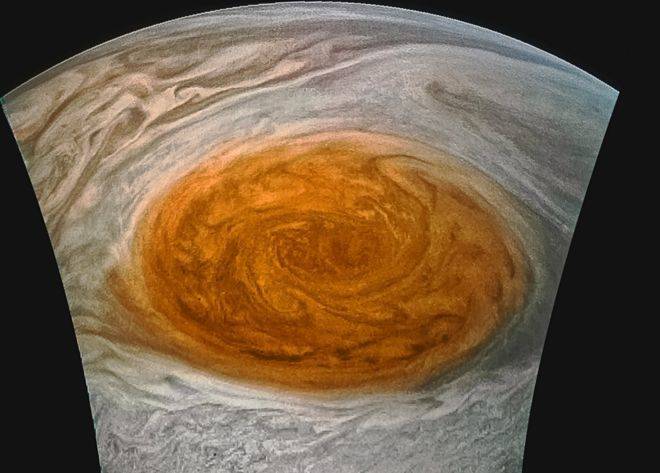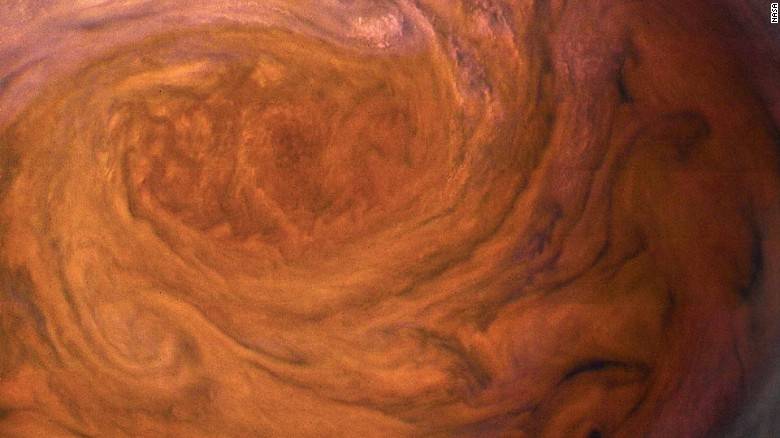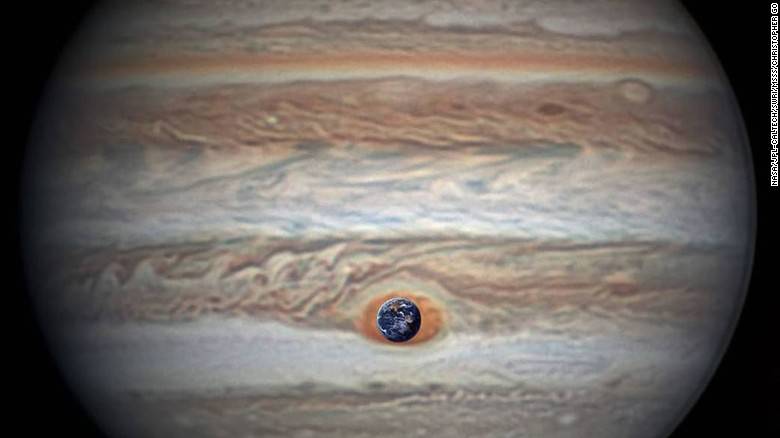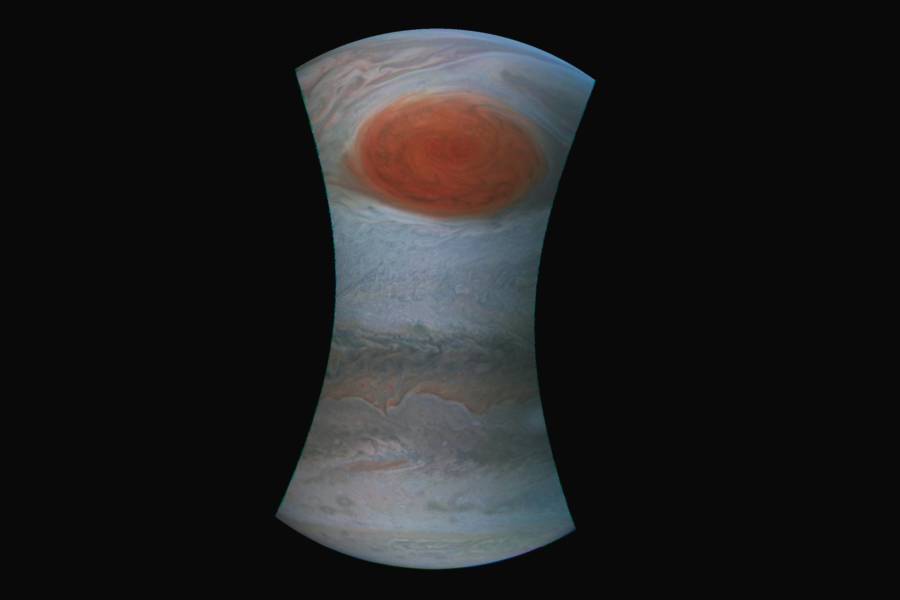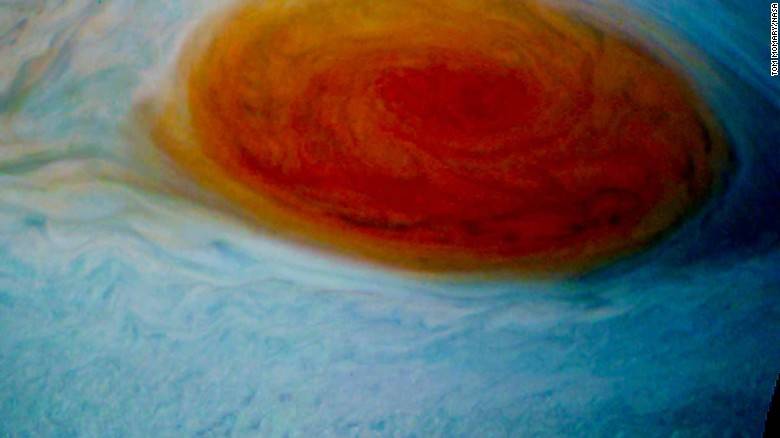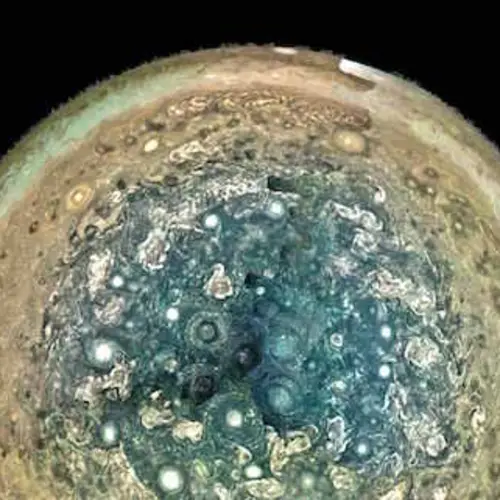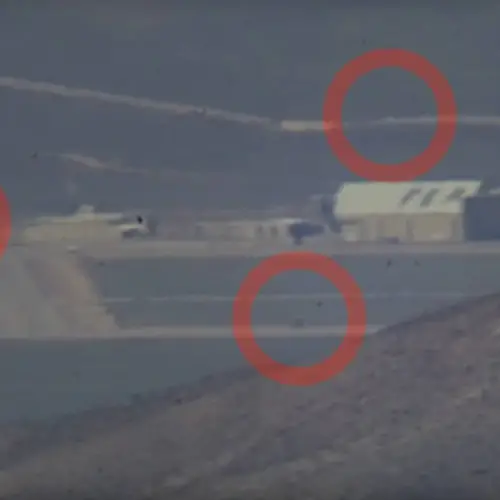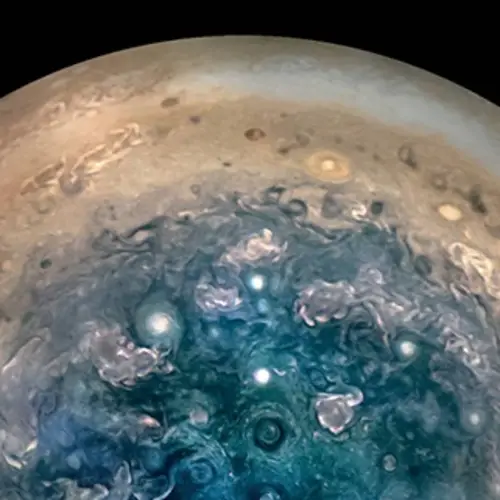The long-raging storm is actually bigger than Earth.
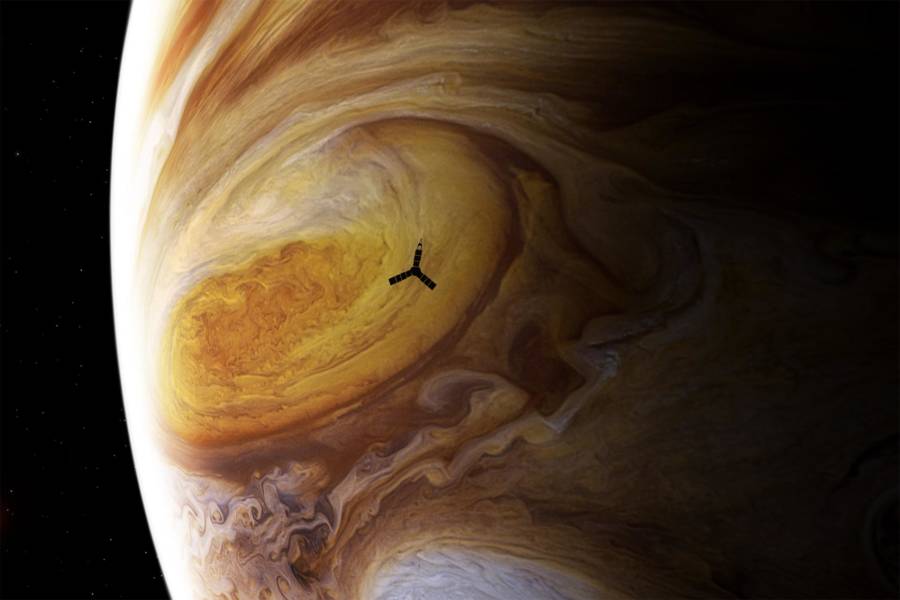
NASA/JPL Björn Jónsson/Seán DoranAn illustration shows what Juno looks like when its snapping shots of Jupiter’s storms.
Humans have never gotten a closer look at Jupiter than we did on July 10. And that means the clearest shot yet of the gas planet’s famous beauty mark: the Great Red Spot.
From a mere 5,600 miles away, the Juno probe snapped breath-taking photos of the 10,000-mile-wide storm — a swirling red cloud formation 1.3 times bigger than Earth.
NASA researchers hope that the close-up’s will help them solve the mystery behind the spot, which has been twirling around on Jupiter for as many as 350 years.
New images of Jupiter will assist our @NASAJuno craft's 1st-ever close-up study of the planet's Great Red Spot: https://t.co/201A0hTRAi pic.twitter.com/RK5Vo14nI5
— NASA (@NASA) July 5, 2017
“This monumental storm has raged on the solar system’s biggest planet for centuries,” Juno’s principle investigator Scott Bolton said in a NASA news release. “Now, Juno and her cloud-penetrating science instruments will dive in to see how deep the roots of this storm go, and help us understand how this giant storm works and what makes it so special.”
Spot spotted! #JunoCam raw images from my #Jupiter #GreatRedSpot flyby are available now. Download, process + share https://t.co/zx6fcc7Fzu pic.twitter.com/NJafDJVVW6
— NASA's Juno Mission (@NASAJuno) July 12, 2017
People have been keeping track of the spot, easily visible even from backyard telescopes, since 1830.
After Juno’s five-year journey to Jupiter’s orbit, the release of these photographs is really the culmination of nearly two centuries of work.
“From the three swirls inside the deep red core to the waves and vortices orbiting it, the images reveal the power and chaos of this iconic storm,” Juno researcher Jonathan Nichols told the BBC of the images. “The light and dark shades reveal the wind flow in the spot and potentially the 3D structure of the cloud decks.”
“But the images are also a perfect convergence of science and art, revealing the awesome beauty of the giant planet,” Nichols went on. “The quality of these data are superb, and it bodes well for further Juno data that will reveal how deep into the atmosphere the Great Red Spot extends.”
Where were you the night of #July4 2016? I was arriving at #Jupiter! Relive the drama… pic.twitter.com/AdeaDFi51h
— NASA's Juno Mission (@NASAJuno) July 4, 2017
The spot has been shrinking over the past 150 years and scientists say they don’t know when or if it could disappear entirely. So be sure to a good look at the solar system’s most famous storm before it’s gone:
Next, check out photos that show how similar-looking Saturn's largest moon is to Earth. Then, take a look at these 26 photos of NASA landings throughout the decades.
